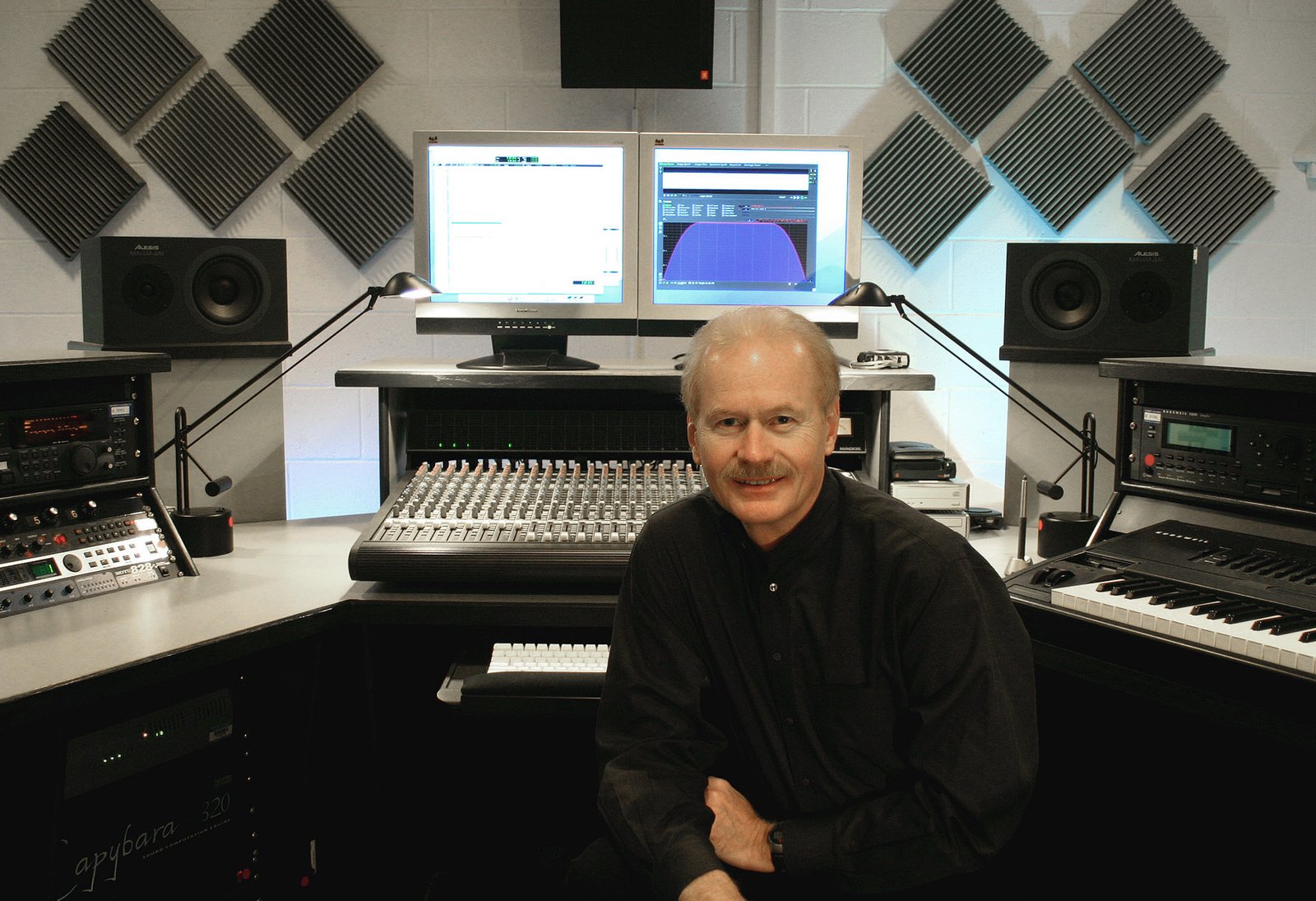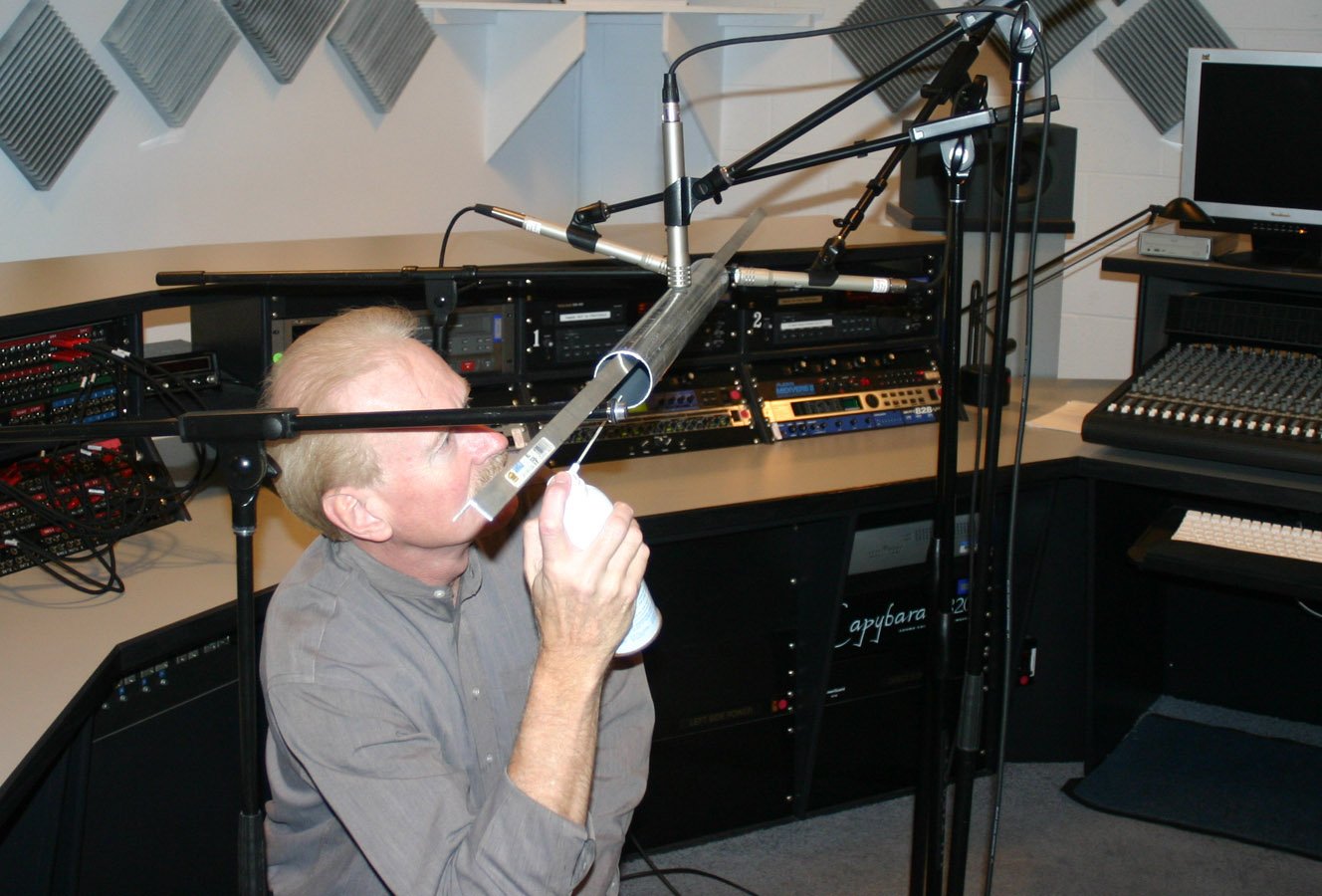Scott A. Wyatt
Composition Archive of Selected Works for Listening and/or Downloading

About
Scott A. Wyatt is Professor Emeritus of Music Composition at the University of Illinois at Urbana-Champaign, where he served on the faculty for over 40 years. As Director of the University’s Experimental Music Studios from 1976 to 2016, Wyatt played a pivotal role in shaping the development of electroacoustic music composition, education, and practice nationally and internationally.
His teaching responsibilities included music composition, music theory, electroacoustic music, and audio recording techniques. His many students have gone on to notable careers in contemporary music composition, electroacoustic music, music education, and audio technology.
Compositional Work
Wyatt is an award-winning composer of contemporary concert art music, known for expanding the boundaries of sound spatialization, gestural composition, and timbral design. His artistic vision also includes interdisciplinary and multimedia collaborations, and his composition portfolio includes:
- Choral, instrumental, chamber, and orchestral music
- Electroacoustic music compositions
- Electroacoustic music for modern dance, documentary film, radio, theater, and television
- Large-scale multimedia concerts featuring multi-channel electroacoustic music, instrumentalists, lasers, and Tesla coils
Wyatt also composed actively within the commercial music field (local and national commercials and productions) while pursuing his career in concert art music. This website focuses primarily on his electroacoustic concert art music compositions.
Focus of This Website
This website serves as a curated archive and showcase of many of Scott A. Wyatt’s electroacoustic music compositions. Contemporary concert art music is often characterized by its exploration of new sonic landscapes, systems, and non-traditional compositional techniques, often reconstituting traditional musical norms. It frequently pushes the boundaries of traditional harmony, rhythm, and form, exploring new compositional structural choices and challenging established musical conventions leading to new musical experiences. Visitors are invited to explore Wyatt’s compositions that reflect decades of innovation in electroacoustic music and contemporary classical traditions that offer immersive musical experiences for modern audiences.
Click on one of the three categories below to listen or download any of the compositions, performance files, program notes and/or bio. information.
ELECTROACOUSTIC MUSIC COMPOSITIONS
ELECTROACOUSTIC MUSIC WITH VIDEO AND VIDEO OF LIVE PERFORMANCES
COMPOSITIONS FOR INSTRUMENTS WITH ELECTROACOUSTIC ACCOMPANIMENT
ELECTROACOUSTIC MUSIC
COMPOSITIONS
all sink (2012) [7:13]
electroacoustic music designed for eight-channel performance (stereo version available)
All material for the piece was derived from sounds recorded in and around the sink. All sounds were recorded at home, followed by processing and assembly into an eight-channel performance environment within the University of Illinois Experimental Music Studios.
all sink
Use the buttons below to access or download the files.
…and nature is alone (2005, revised 2015) [10:51]
in memory of the victims of the Chernobyl accident on the 30th anniversary of the disaster. electroacoustic music designed for eight-channel performance (stereo version available)
This piece is dedicated to the memory of those who experienced the horror of the world’s worst nuclear accident – Chernobyl, and to the living who continue to experience the ramifications of such a disaster. Elena Filatova, who actually takes rides into the “dead zone”, wrote the text presented in this composition.
...and nature is alone
Use the buttons below to access or download the files.
Recorded on Music from SEAMUS volume 26. SEAMUS Records EAM-2017 includes Scott A. Wyatt …and nature is alone
Circulation (1986) [10:06]
electroacoustic music designed for stereo performance
Circulation was composed and realized in 1986 offering the listener a three-section work around the primal elements of Water, Air, and Fire.
Circulation
Use the buttons below to access or download the files.
Recorded on Beyond the Lines, crossings without drums by Scott A. Wyatt. OFFICE Records FIL-300. Includes Scott A. Wyatt: Circulation
ComLinks (2010) [8:20]
electroacoustic music designed for eight-channel performance (5 channel and sterio versions available)
ComLinks is a setting of associated sounds and activities depicting our incessant pursuit of instant communication. Three-dimensional techniques were employed to position sounds and activities within the audience listening area.
ComLinks
Use the buttons below to access or download the files.
Recorded on Music from SEAMUS volume 21. SEAMUS Records EAM-2010, includes Scott A. Wyatt: Comlinks
In the Arms of Peril (2001, revised 2011) [10:00]
On the occasion of the 10th anniversary, this work was revised and remastered, and is now dedicated to the memory of the victims of the 9/11 attacks.
electroacoustic music designed for eight-channel performance (stereo version available)
As we proceed with our lives, hopes and dreams, and the daily ventures of life, we are at times exposed to increasingly dangerous provocations, threats, and serious challenges. For some, the real issue is survival. In this work, through the use of sonic environments and events, such confrontations are relived with the persistent search for threads of relief, from the shadow of being in the arms of peril. In the Arms of Peril was originally completed just two months prior to September 11, 2001.
Unique miking and channel distribution techniques, along with three-dimensional encoding techniques were incorporated to enhance the spatialization and sonic imaging for the piece.
In the Arms of Peril
Use the buttons below to access or download the files.
Recorded on Music from SEAMUS volume 11. SEAMUS Records EAM-2002. includes Scott A. Wyatt: In the Arms of Peril.
Inquiry (1986) [1:38]
electroacoustic music designed for sterio performance
Inquiry was realized as a brief soundscape exercise using SoundDesigner II and HyperPrism software at the University of Illinois Experimental Music Studios.
Inquiry
Use the buttons below to access or download the files.
Recorded on Beyond the Lines, crossings without drums by Scott A. Wyatt. OFFICE Records FIL-300. includes Scott A. Wyatt: Inquiry.
Mask (1986) [6:46]
electroacoustic music designed for stereo performance
Mask was the creative result of digital timescaling research and experiments with the then newly acquired Studer Editech Dyaxis digital audio workstation within the University of Illinois Experimental Music Studios. The Studer Editech Dyaxis system had one of the early time compression/expansion algorithms that actually permitted extensive timescaling application. Mask consists of numerous layers of timescaling of a single note that is exposed both at the very beginning, as well as the end.
Mask
Use the buttons below to access or download the files.
Night Visitors (2002) [8:48]
electroacoustic music designed for eight-channel performance (sterio version available)
Night Visitors loosely reflects a few of the sometimes startling events initiated by my wife’s cats in the middle of too many sleepless nights. On more than one occasion, this composer has been jolted out of a deep sleep, to the crash of…
Unique miking and channel distribution techniques were incorporated to enhance the spatialization and sonic imaging for the piece.
Night Visitors
Use the buttons below to access or download the files.
Recorded on Music from SEAMUS volume 12. SEAMUS Records EAM-2003, includes Scott A. Wyatt: Night Visitors
On a Roll (2004) [8:31]
electroacoustic music designed for eight-channel performance (5 channel and stereo versions available)
On a Roll is a work designed specifically for, and recorded in an eight-channel environment and was realized within the University of Illinois Experimental Music Studios. Unique miking and channel distribution techniques, along with three-dimensional encoding techniques were incorporated to enhance the spatialization and sonic imaging for the piece. Sonically, the obvious is not what it seems. As a challenge to myself with regard to sound design, the art of Foley was used to create illusions of rolling objects (sonic icons) that you may recognize; hence there are no recordings of actual rolling objects until the last few seconds of the piece.
On a Roll
Use the buttons below to access or download the files.
Poems (1986) [12:34]
electroacoustic music designed for dance performance in five movements
- Genesis II. Luna III. Quarks IV. Destiny V. Starfolk
Poems was requested and composed for the University of Illinois Department of Dance for performance at the Krannert Center for the Performing Arts in 1986. The performance was under the direction of choreographer and Professor Patricia Knowles.
Poems
Use the buttons below to access or download the files.
Use the buttons below to access the individual movements from Poems.
Recorded on Beyond the Lines, crossings without drums by Scott A. Wyatt. OFFICE Records FIL-300. includes Scott A. Wyatt: Poems.
Still Hidden Laughs (1988) [7:40]
electroacoustic music designed for stereo performance
Still Hidden Laughs is a tribute to composer, colleague, and friend – Herbert Brün on the occasion of his 70th birthday. It utilizes shaped sound mass parameters and combinations rather than specific pitch material and draws attention to the importance of subtle and sometimes even sensual musical “gestures” while attempting to avoid the commercial and decorative compositional traps. These gestures can be heard as both single events and as composite phrases creating a dialogue within and among the multiple layers of sound.
Still Hidden Laughs
Use the buttons below to access or download the files.
Recorded on CDCM Computer Music Series volume 3. CENTAUR Records CRC-2045. includes Scott A. Wyatt: Still Hidden Laughs.
ELECTROACOUSTIC MUSIC WITH VIDEO AND VIDEO OF LIVE PERFORMANCES
All At Risk (2004) [8:57]
video presentation with electroacoustic music designed for 8-channel performance.
All At Risk attempts to share some of the feelings I had when recently reading email messages from a news correspondent friend who had been sent to Iraq to cover ongoing events there. The email was sent to his family who, in-turn, shared it with me. I have left out the much more graphic moments as I feel the excess gore, pain and suffering would detract from the basic message of this piece. The stress and overall sense of helplessness I felt when reading his email, along with a better sense of the amount of danger that those in Iraq face on a minute-by-minute basis, is what motivated the creation of this work. I wish to express my appreciation to ABC News correspondent Brian Rooney and his family for sharing his email, and to John Ritz for his help with video editing.
Risky Business: a tribute to Nikola Tesla (2008) [9:12]
composition for electroacoustic music with live Continuum performance and two Tesla Coils composed by Mark Smart and Scott A. Wyatt.
- Continuum performer, Mark Smart
- Live mixing, Scott A. Wyatt
- Tesla Coil control hardware and software design, Steve Ward
- Technical assistance and Tesla Coil expertise, Terry Blake and Jeff Larson
- Continuum design, Lippold Haken
This piece begins with the brief comment from NY City’s Mayor Fiorello LaGuardia’s reading of the Eulogy to Nikola Tesla on January 10, 1943. Risky Business is a blend of studio realized electroacoustic music, live continuum performance, and live audio generated from the Tesla Coils both receiving a combination of audio and MIDI signals – combining the talents of the team.
Time Mark (1983, revised 2000) [8:43]
composition for solo percussion with electroacoustic accompaniment
Within Time Mark (commissioned by percussionist Kathleen Kastner), are specific considerations including a continuum of timbre – thus providing for an integration of electroacoustic and live sounds without the loss of individuality, and spatial disposition – wherein the location from which sounds emanate within the host performance space is also a parameter for composition. Originally realized in 1983 with concrete and modular voltage-controlled synthesis techniques (including much analog tape editing), the electroacoustic portion of the composition was reworked to reduce the inherent analog tape hiss and was then digitally re-recorded in 2000.
Victor Pons, percussionist
Chrystal Chiu, percussionist

